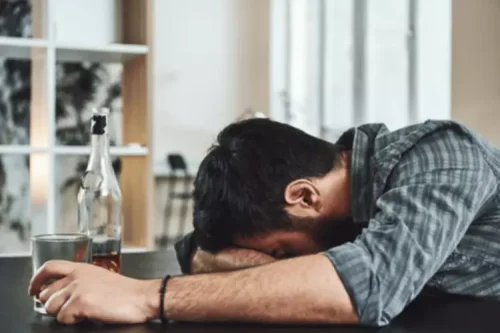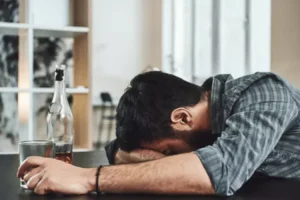
Because of these symptoms, you won’t be able to make decisions about your medical care. Healthcare providers will treat you to stabilize you (unless you have some kind of advance medical directive on file with them). They may also talk to family, friends or loved ones you previously approved to know and make decisions about your medical care. The long-term goal after treating DTs is to treat alcohol use disorder. Receiving treatment for it can help reduce the odds of developing DTs in the future.
Differential Diagnosis
There are medications such as benzodiazepines that are used in some cases of alcohol withdrawal to help manage symptoms. Benzodiazepines come with a risk of dependence as well, so their use should be monitored carefully. Individuals experiencing alcohol withdrawal syndrome should receive treatment according to the severity of their condition. Those with very mild symptoms can receive treatment as outpatients but may require the support and help of family and close friends for help.
Symptoms of Alcohol Withdrawal: Timeline and Signs of Danger

Delirium tremens isn’t curable, but it can be treated to help you manage symptoms and avoid complications such as dehydration. The initial detox stage of alcohol withdrawal usually takes about one week. However, you may find that your symptoms continue for longer, even up to a few weeks to months. Throughout your withdrawal of alcohol, clinicians will continue to use the CIWA-Ar to monitor your signs and symptoms and determine if your alcohol withdrawal is worsening or getting better.
How Much Do I Have To Drink To Experience Withdrawal?
The most severe and dangerous form of alcohol withdrawal is called delirium tremens (DT), in which withdrawal symptoms are much stronger. You may experience severe confusion, high blood pressure, fever, high heart rate, and abnormal heart rhythms for a week or longer. The symptoms of alcohol withdrawal, like mood swings, nausea, and tremors, can be dangerous and often occur after the cessation of drinking in those with alcohol use disorders.
- Patients with mild to moderate withdrawal symptoms without additional risk factors for developing severe or complicated withdrawal should be treated as outpatients when possible.
- Long-term treatment of AUD should begin concurrently with the management of AWS.8 Successful long-term treatment includes evidence-based community resources and pharmacotherapy.
- So, when in the midst of withdrawal, it’s common for many people to experience a wide variety of mental health changes and challenges.
- It doesn’t require any special equipment or extensive training—just a few moments of focused breathing or mindfulness can set the process in motion.
- Due to this, the central nervous system has created a mechanism to compensate for alcohol’s depressive effects on brain function.
Support Groups

Importance Alcohol withdrawal syndrome (AWS) is an important cause and complication of hospitalizations. Although common and preventable, the incidence of AWS during hospitalizations is poorly described. A peaceful center dedicated to providing comprehensive treatment for mental health and addiction, helping young adults (18-35) and their families. Integrating the power of nature and evidence-based care to treat addiction and co-occurring disorders with detox, residential, and outpatient care. This depends on the individual and the results of laboratory tests that their doctor may order.
Delirium Tremens Treatment
This article discusses the causes, common symptoms, and different stages of alcohol withdrawal. It also discusses various treatment options for alcohol withdrawal and how you can get help. It’s never too late to seek help, no matter how things might seem right now. Please call to speak to a compassionate admissions navigator about your alcohol withdrawal treatment options. They can explain more about treatment admissions, rehab insurance coverage, and paying for addiction treatment. This page will discuss alcohol withdrawal syndrome, its potential symptoms, and how treatment can help.
- As with nausea and vomiting, if these symptoms don’t go away after you have stopped using alcohol or drugs for a week or so, they could indicate another medical condition, and you should see a doctor.
- Alcohol, being a neurotoxin, disrupts the balance of these neurotransmitters in the brain, and its effects are what is referred to as intoxication.
- Even your immune system gets stronger, helping you fight off infections more easily.
- With a clearer mind and better energy, you can get things done more effectively and feel more satisfied with your accomplishments.
The alcohol withdrawal timeline varies, but the worst of the symptoms typically wear off after 72 hours. People who are daily or heavy drinkers may need medical support to quit. Stopping drinking abruptly can lead to seizures cure for alcohol withdrawal symptoms and can even be fatal.
What are the symptoms of alcohol withdrawal?
- People can partake in some natural remedies and activities to keep their minds occupied and help pass the time as withdrawal symptoms fade.
- Alcohol misuse often strains relationships5 as it causes misunderstandings, conflicts, and emotional distance.
- Music you used to love may no longer have the same draw while you are using alcohol.
- Ark Behavioral Health offers 100% confidential substance abuse assessment and treatment placement tailored to your individual needs.
One of the main risks with vomiting is dehydration, so get plenty of water or other clear drinks. When viewing this topic in a different language, you may notice some differences in the way the content is structured, but it still reflects the latest evidence-based guidance. Enter your phone number below to receive a free and confidential call from a treatment provider.

This makes it more likely that the person will overdose if they do relapse, with drugs like opioids having a greater effect than what a person was used to before they discontinued their use. And, even without the risk of overdose, relapses can be demoralizing to those who experience them and damaging to those who may not easily be persuaded to begin the recovery process a second time in the future. Unfortunately, despite the need for rest and healing, people experiencing withdrawal often struggle to fall asleep or to stay asleep. Many report acute insomnia, with cravings and other withdrawal symptoms becoming heightened when they stop moving and try to sleep. Others, even after they do fall asleep, experience painful, distressing nightmares and other sleep disturbances, creating a painful cycle of stress and exhaustion. Homeostasis is the concept that the human body is always working to maintain its internal balance, constantly adapting to changing conditions.
- For this reason, you should always talk to your doctor before stopping or reducing your substance use.
- But withdrawal is a sign of cannabis (marijuana) use disorder, which does require professional care.
- The syndrome typically presents as mild anxiety and gastrointestinal discomfort and can progress to severe manifestations, such as alcohol withdrawal delirium, which poses significant diagnostic and management challenges.
- Consequently, the interprofessional healthcare team must ascertain the most suitable setting based on a patient’s symptoms.
- Sedatives, usually benzodiazepines, are medications used to treat alcohol withdrawal and DTs.
Nearly one-third of U.S. adults will have alcohol use disorder at some point in their lives, and it is estimated that about 1% of those people may get delirium tremens. If untreated, delirium tremens can cause severe symptoms including heart attack, stroke, and death. Delirium tremens, also called DTs or alcohol withdrawal delirium (AWD), is an uncommon, severe type of alcohol withdrawal.